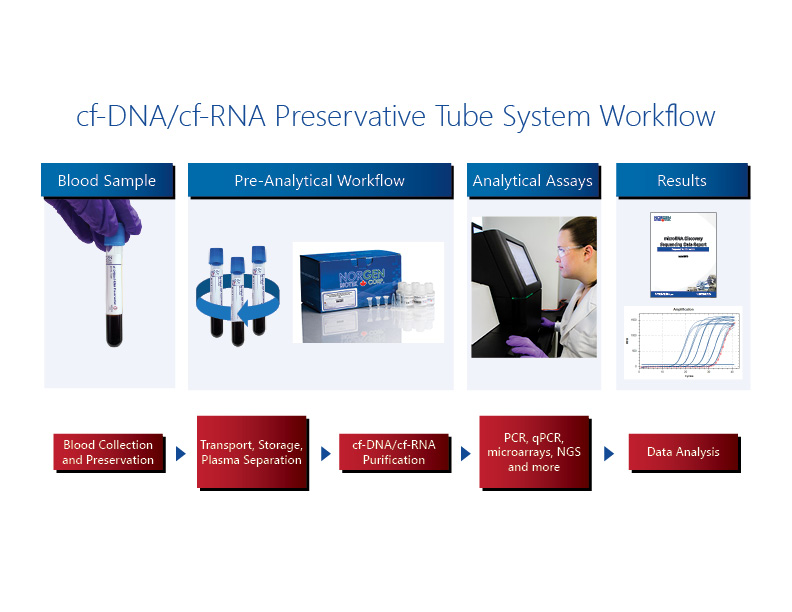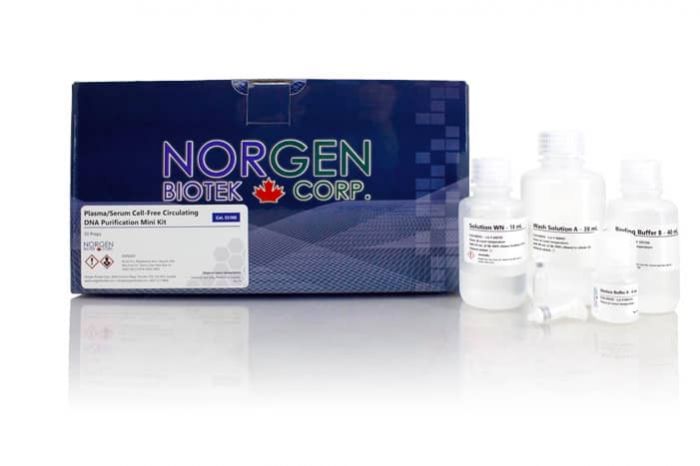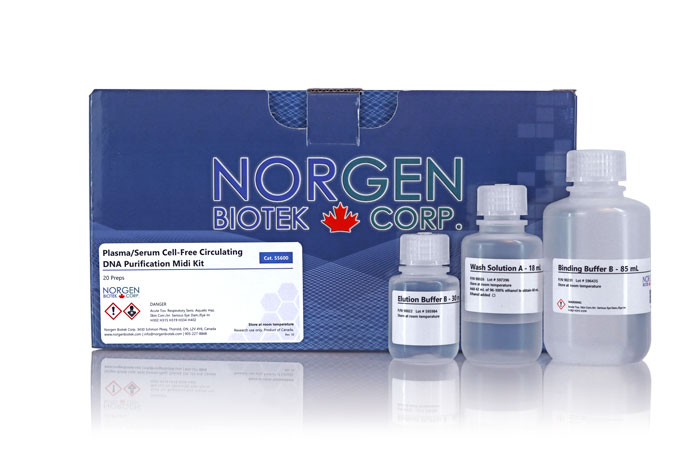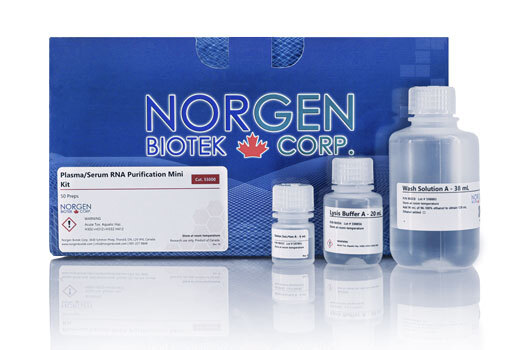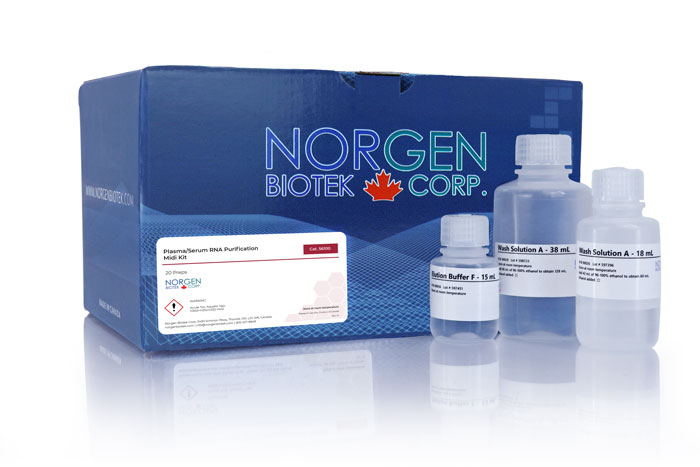cf-DNA/cf-RNA Preservative Tubes
For Whole Blood Collection and Preservation of Cell-Free Circulating DNA and RNA
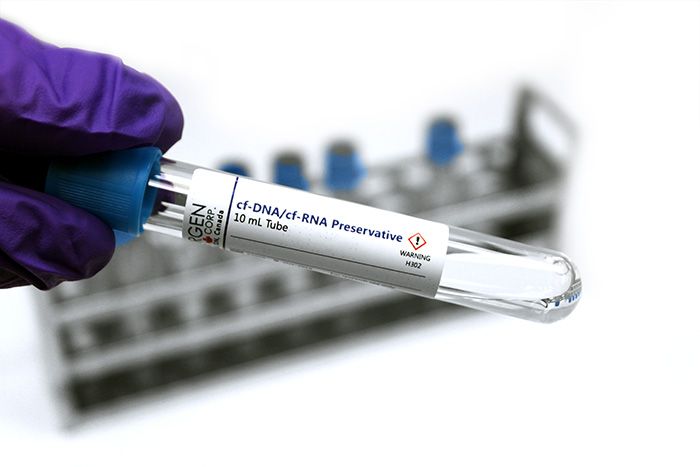
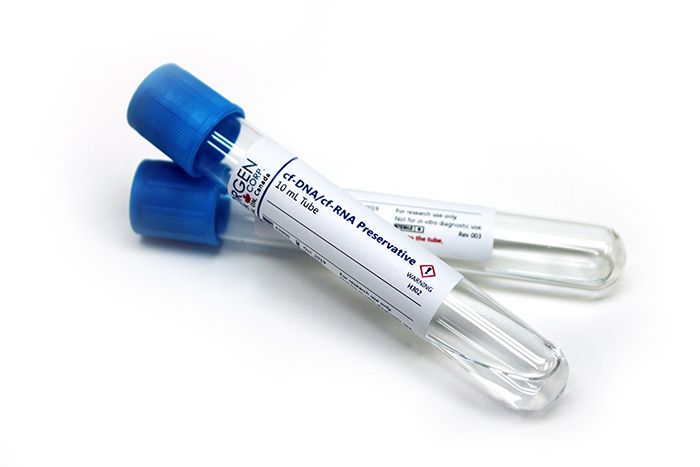
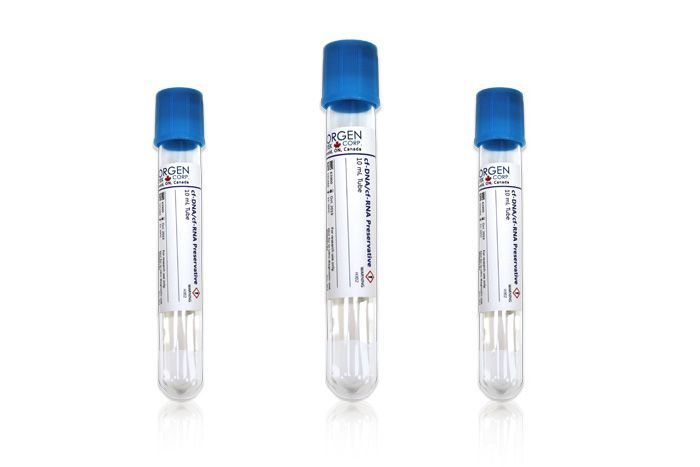
For research use only and NOT intended for in vitro diagnostics.
CE-IVD diagnostic version available here
cf-DNA/cf-RNA Preservative Tubes
For Whole Blood Collection and Preservation of Cell-Free Circulating DNA and RNA
Register today to receive an exclusive 15% off* on your first order.
Features and Benefits
- Preservation and isolation of both cf-DNA and cf-RNA from a single tube
- Fixative-free preservative, no cross-linking of DNA
- Preserve cf-DNA/ct-DNA for 30 days at ambient temperature and for up to 8 days at 37°C
- Preserve cf-RNA for 30 days at ambient temperature
- Preserve Circulating Tumour Cells (CTCs) for 14 days at ambient temperature
- No plasma volume loss after shipping/transportation
- Prevent hemolysis allowing better separation of plasma
- Prevent apoptosis of blood cells and fragmentation of genomic DNA
- Produce high quality/quantity of plasma cf-DNA/ct-DNA/cf-RNA
- Vacuumed to draw 8.7 mL of blood in 10 mL tubes
- The procedure for plasma isolation using this kit is compliant with ISO 20186-3:2019
Norgen's cf-DNA/cf-RNA Preservative Tubes are closed, evacuated plastic tubes for the collection and the preservation of cf-DNA, circulating tumor DNA, cf-RNA and circulating tumor cells in human whole blood samples during storage and shipping. Using these tubes in combination with Norgen's Plasma/Serum Cell-Free Circulating DNA Purification Kits or Norgen's Plasma/Serum RNA Purification Kits enables the purification and concentration of an inhibitor-free cf-DNA/ct-DNA/cf-RNA in a very small elution volume. Plasma recovered from Norgen's cf-DNA/cf-RNA Preservative Tubes is also compatible with any other cf-DNA and/or cf-RNA purification method. The purified cf-DNA, ct-DNA and cf-RNA are compatible with any downstream application assays, including PCR, qPCR, rt-qPCR, methylation-sensitive PCR, Southern Blot analysis, gene expression analysis, microarrays and NGS.
This product is for research use only and not for use in diagnostic procedures.
Performance
Norgen's cf-DNA/cf-RNA Preservative Tubes abridge the collection/processing of whole blood for the subsequent purification of cf-DNA and/or cf-RNA. The cf-DNA/cf-RNA Preservative Tubes preserve and inhibit the programmed cell-death (apoptosis) of the blood, hence preventing the release of intracellular DNA/RNA into plasma. Whole blood samples can be shipped and stored at room temperature for the subsequent processing of plasma. The cf/ct DNA and cf-RNA levels are stable for up to 30 days at room temperature. The cf-DNA is also stable for up to 8 days at 37°C. When blood collected on Norgen's cf-DNA/cf-RNA tubes is processed for plasma recovery no buffy coat will be generated and the Circulating tumor cells (CTCs) will be located at the bottom of the tube with the blood sediment. CTCs are stable for 14 days at room temperature where it can be extracted from the blood sediment or from whole preserved blood for cell sorting or for cf/DNA or cf-RNA purification.
Plasma samples produced from the whole blood sample collected into Norgen’s cf-DNA/cf-RNA Preservative Tubes and purified using Norgen's Plasma/Serum Cell-Free Circulating DNA Purification Kits or Norgen's Plasma/Serum RNA Purification Kits yield concentrated, high-quality and inhibitor-free cf-DNA/ct-DNA or cf-RNA for any downstream application.
Workflow
NOTE: This product is for research use only. For the CE marked version, see Cat. Dx63950
Details
Supporting Data
Figure 1. Effect of ambient temperature storage on cf-DNA (pDNA), exemplified by the short Alu (115bp) fragment, and genomic DNA (gDNA), exemplified by the large Alu (247 bp) fragment. Blood samples were drawn into either: 1) EDTA tubes, 2) Competitor tubes or 3) Norgen's cf-DNA/cf-RNA Preservative Tubes and stored at room temperature. Aliquots of blood were removed at the indicated times and the plasma was separated. DNA was isolated, and pDNA and gDNA concentrations were determined by real-time PCR using a short ALU gene target (115 bp) representing the pDNA and a long ALU gene (247 bp) representing the gDNA. Levels of these two fragments should stay the same for the duration indicating stabilization and no hemolysis. As expected, there was no stabilization of cf-DNA and extensive hemolysis in the EDTA tube. Competitor showed significantly lower Ct values for both genes after 14 days, whereas cf-DNA was stable for 30 days at room temperature for Norgen's cf-DNA/cf-RNA Preservative Tubes.
Figure 2. No plasma volume loss after shipping/transportation. Blood was drawn from 6 different donors in duplicate. One set was kept in the lab at room temperature and the other was packed in an insulated box and shipped from Thorold, ON via overnight air freight to Winnipeg, MB and then back to Thorold ON (elapsed time 72 h). Upon return, preserved samples were stored at room temperature for 7 days before plasma was separated. The plasma volume recovered from Norgen's cf-DNA/cf-RNA Preservative Tubes did not change before shipping or after shipping (6-7 mL recovered plasma). For both Competitor tubes and EDTA tubes the plasma volume recovered before shipping was ~ 4 mL and after shipping was ~ 2.5 mL.
Figure 3. Hemolysis of collected blood measured over time. Blood samples were drawn into: 1) EDTA tubes, 2) Competitor tubes and 3) Norgen's cf-DNA/cf-RNA Preservative Tubes and stored for up to 30 days. Hemolysis was determined by measuring the absorption of free hemoglobin in plasma from 3 subjects at 414 nm over several time points. Mean absorption is shown. The amount of free hemoglobin increased rapidly with each additional storage day in the EDTA tubes and Competitor tubes, and remained relatively constant in Norgen's cf-DNA/cf-RNA Preservative Tubes.
Figure 4. Prevent cell lysis and the release of gDNA and accumulation of apoptotic ladder in plasma. Blood samples drawn into three different tubes (Norgen's cf-DNA/cf-RNA Preservative Tubes, EDTA, and Competitor) and stored for up to 30 days. Norgen's cf-DNA/cf-RNA Preservative Tubes helps prevent the release of high molecular weight gDNA into plasma while also minimizing the accumulation of contaminating apoptotic ladder from dying peripheral blood leukocytes. As indicated in the black circle, gDNA contamination is at a very low level as compared to both the Competitor and EDTA tubes. This is indicative of very low levels of cell lysis and subsequent release of gDNA into the preserved plasma sample.
Figure 5. Effect of high temperature (37°C) storage for 8 days. Blood samples were drawn into either EDTA tubes, Competitor tubes or Norgen's cf-DNA/cf-RNA Preservative Tubes and stored at 37°C. cf-DNA was then isolated from processed plasma. gDNA concentration was determined by real-time PCR using a long ALU gene target (247 bp). The gDNA - target in EDTA tubes showed a significant drop in the Ct. value after 1 day of storage at 37°C compared to the initial time point, and continued to drop until the 8th day of storage. For Competitor, the gDNA - target remained stable up to the 4th day of storage and then the Ct. values started to significantly drop, indicating poor stabilization beyond day 4. Norgen's cf-DNA/cf-RNA Preservative Tubes stabilized samples for 8 days.
Figure 6. High Quantity of cf-DNA from Plasma preserved using Norgen's cf-DNA/cf-RNA Preservative Tubes. Blood samples from the same donor were drawn into either Competitor tubes or Norgen's cf-DNA/cf-RNA Preservative Tubes and stored at room temperature for 7 days. Norgen's cf-DNA/cf-RNA preservative Tube recovered 6.5mL plasma whereas the Competitor's tube recovered 3.5mL plasma. The cf-DNA was then isolated from the entire plasma volume recovered from each tube using Norgen's Plasma/Serum Cell-Free Circulating DNA Purification Midi Kit (Cat. 55600) and Norgen's Plasma/Serum Cell-Free Circulating DNA Purification Maxi Kit (Cat. 55800). The quantity of DNA recovered from both samples were assessed using the Agilent Bio-analyzer High Sensitivity DNA Chip. As can be seen in the bioanalyzer trace, Norgen's preservative tube yielded more cf-DNA (Blue peak) as compared to the cf-DNA recovered from the Competitor's preservative tube.
Figure 7. Effect of ambient temperature storage on cf-RNA, exemplified by the 18S rRNA transcript, HPRT1 mRNA transcript and miR-21. Blood samples were drawn into either: 1) Competitor tubes or 2) Norgen's cf-DNA/cf-RNA Preservative Tubes. Competitor’s tubes were stored at room temperature for 14 days whereas Norgen’s cf-DNA/cf-RNA Preservative Tubes were stored for 30 days at room temperature. At the indicated times each tube was processed and the plasma was separated. Cf-RNA was isolated and the stability of the purified cf-RNA was determined by rt-qPCR amplification targeting the 18S rRNA transcript, HPRT1 mRNA transcript and miR-21. Levels of these three targets should stay the same for the duration indicating stabilization. Competitor showed significantly higher Ct values for the three targets after 7 days indicating cf-RNA degradation, whereas cf-RNA was stable for 30 days at room temperature for Norgen's cf-DNA/cf-RNA Preservative Tubes.
Figure 8. Effect of ambient temperature storage on plasma protein preservation for 30 days. Blood samples were drawn into Norgen's cf-DNA/cf-RNA Preservative Tubes and were stored for 30 days at room temperature. At the indicated times each tube was processed for plasma recovery and proteins were purified from 50 µL plasma using Norgen’s ProteoSpin™ Abundant Serum Protein Depletion Kit (Cat. 17300) . The stability of the purified A) depleted – plasma proteins and B) highly abundant plasma proteins was evaluated on a 12% SDS-PAGE Gel. Both the depleted – plasma proteins and the highly abundant plasma proteins were found to be stable for 30 days at ambient temperature without any sign of protein degradation.
|
Kit Specifications
|
|
|
Tube Size
|
16 x 100 mm
|
| Tube Type | PET Tube |
|
Blood Draw Volume
|
8.7 mL in 10 mL Tubes
|
| Preservative Volume |
1.3 mL
|
| Recovered Plasma Volume | Approximately 6-7 mL (not affected by shipping) |
| Anticoagulant |
Proprietary
|
| Preservative |
Non formaldehyde - Proprietary preservation agent
|
|
Length of cf-DNA Preservation |
Up to 30 days at room temperature (15-25°C)
Up to 8 days at 37°C |
|
Length of cf-RNA Preservation |
Up to 30 days at room temperature (15-25°C)
|
|
Length of CTCs Preservation |
Up to 14 days at room temperature (15-25°C)
|
Storage Conditions and Product Stability
- When stored at 15-30°C, unfilled Norgen cf-DNA/cf-RNA Preservative Tubes are stable through the expiration date. See tube label for expiry date.
- Short-term storage/shipping at -20°C to 37°C for up to 10 days is acceptable for unfilled Norgen cf-DNA/cf-RNA Preservative Tubes.
- Do not freeze unfilled Norgen cf-DNA/cf-RNA Preservative Tubes for long term storage over 10 days. Freezing unfilled tubes may lead to loss of vacuum and precipitation may occur.
- Cell-free DNA in blood samples collected in Norgen's cf-DNA/cf-RNA Preservative Tubes is stable for up to 30 days when stored at room temperature (15-25°C)
- Cell-free DNA in blood samples collected in Norgen's cf-DNA/cf-RNA Preservative Tubes is stable for up to 8 days when stored at 37ºC.
- Cell-free RNA in blood samples collected in Norgen's cf-DNA/cf-RNA Preservative Tubes is stable for up to 30 days when stored at room temperature (15-25°C)
- Circulating tumor cells (CTCs) in blood samples collected in Norgen's cf-DNA/cf-RNA Preservative Tubes are stable for up to 14 days at room temperature (15-25ºC).
Documentation
Isolation of White Blood Cells (WBCs) / Circulating Tumour Cells (CTCs) from cf-DNA/cf-RNA Preservative Tubes
Supp Protocol PI63950-RNA from WBCs and CTCs_0.pdf
Supplementary Protocol PI63950-2-DNA from WBCs and CTCs.pdf
Supplementary Protocol PI63950-2 RNA DNA Protein Purification from Leukocytes.pdf
FAQs
Citations
| Title | Preanalytical, analytical and postanalytical considerations in circulating microRNAs measurement |
| Citation | Biochemia Medica 2024. |
| Authors | Mustapha Zendjabil |
| Title | Cell-Free DNA as a Biomarker in a Rodent Model of Chlorpyrifos Poisoning Causing Mitochondrial Dysfunction |
| Citation | Journal of Medical Toxicology 2023. |
| Authors | Shih-Han Kao, Frances S. Shofer, John C. Greenwood, Oladunni Alomaja, Abhay Ranganathan, Sarah Piel, Clementina Mesaros, Samuel S. Shin, Johannes K. Ehinger, Todd J. Kilbaugh & David H. Jang |
| Title | Early Detection of Lung Cancer Using Small RNAs |
| Citation | | SCREENING/EARLY DETECTION 2023. |
| Authors | Tobias Sikosek PhD, Rastislav Horos PhD, DVM, Franziska Trudzinski MD, Julia Jehn PhD, Maurice Frank MSc, Timothy Rajakumar MD, PhD, Laura V. Klotz MD, Nathaniel Mercaldo PhD, Mustafa Kahraman PhD, Marco Heuvelman MSc, Yasser Taha MSc, Jennifer Gerwing MSc, Jasmin Skottke MSc, Alberto Daniel-Moreno PhD, Marta Sanchez-Delgado PhD, Sophie Bender BSc, Christina Rudolf PhD, Franziska Hinkfoth MSc, Kaja Tikk PhD, Judith Schenz PhD f...Bruno R. Steinkraus PhD |
| Title | Potential of circulating tumour DNA as a biomarker in liquid biopsy |
| Citation | Biotechnology & Biotechnological Equipment 2023. |
| Authors | Dimitar Dimitrov, Hristo Ivanov, Nelly Miteva-Marcheva & Vili Stoyanova |



